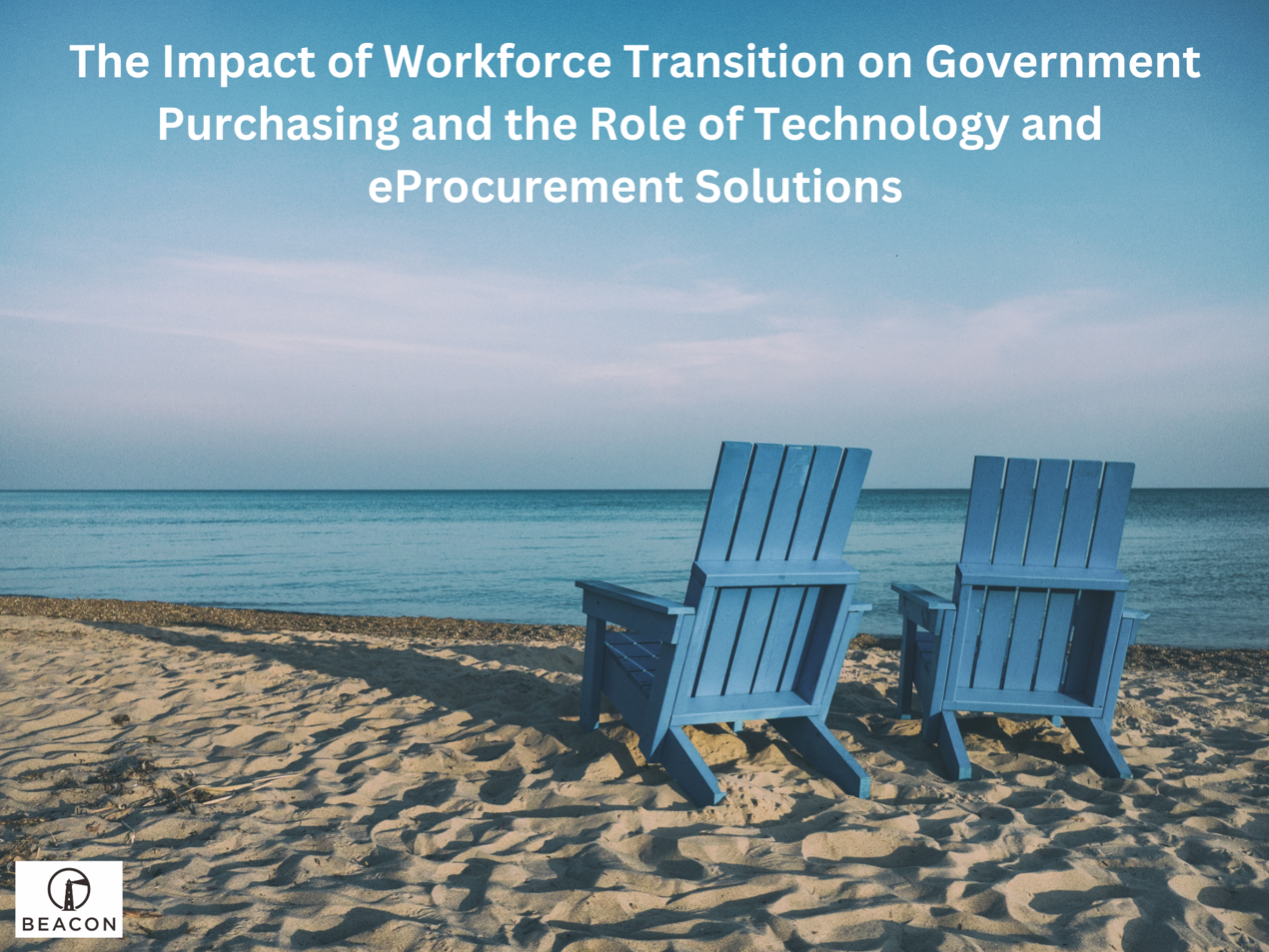The Impact of Workforce Transition on Government Purchasing and the Role of Technology and eProcurem
Tuesday, June 6, 2023

As we have traveled around the U.S. and met with a number of purchasing managers and staff, the feedback has been consistent. The workforce transition resulting from a large number of retirements and people leaving their jobs poses significant challenges for government agencies, particularly in the area of purchasing.
The departure of experienced personnel can lead to knowledge gaps, increased workloads for remaining staff, and potential disruptions in procurement processes. However, technology and eProcurement solutions offer opportunities to mitigate these challenges and assist both existing staff and newcomers in efficiently carrying out their duties. This report examines the impact of workforce transition on government purchasing and explores how technology and eProcurement solutions can support the remaining workforce and new employees.
I. Impact of Workforce Transition on Government Purchasing:
- Knowledge and Experience Gap:
a. Retirements and departures result in the loss of institutional knowledge and expertise, leading to potential inefficiencies and delays in procurement processes.
b. Remaining staff may struggle to fill the gaps left by experienced personnel, resulting in increased workload and potential burnout.
- Disruptions in Procurement Operations:
a. Lack of continuity in procurement operations may cause delays and adversely affect project timelines.
b. Without proper knowledge transfer, new employees may face challenges in understanding existing procurement practices and policies.
II. Technology and eProcurement Solutions Can Help:
- Enhanced Efficiency and Automation:
a. Implementing eProcurement solutions streamlines purchasing processes, reducing manual effort and paperwork.
b. Automation of routine tasks, such as purchase order generation and supplier communication, improves efficiency and frees up staff time.
- Knowledge Management Systems:
a. Technology can facilitate the creation of knowledge repositories, where departing employees can document their expertise, best practices, and lessons learned.
b. These repositories can serve as valuable resources for remaining staff and new hires, bridging the knowledge gap and facilitating smoother transitions.
- Training and Onboarding:
a. Technology-based training programs and online resources can aid in the onboarding of new employees, providing them with essential knowledge and skills for effective purchasing.
b. Virtual learning platforms, webinars, and video tutorials can deliver training remotely, ensuring accessibility for geographically dispersed staff.
- Analytics and Data Insights:
a. Technology solutions can leverage data analytics to provide valuable insights into procurement trends, supplier performance, and cost optimization opportunities.
b. By harnessing these insights, government agencies can make informed decisions, optimize procurement strategies, and achieve cost savings.
III. Challenges and Considerations:
- Data Security and Privacy:
a. Implementation of technology and eProcurement solutions necessitates robust security measures to protect sensitive government data.
b. Encryption, secure networks, and regular audits are vital to ensure the integrity and confidentiality of procurement information.
At Beacon, our engineers have poured countless hours and abundant resources into meticulously crafting a diverse array of cutting-edge tools. These tools serve a paramount purpose: fortifying and elevating security standards. Our unwavering commitment to this pursuit empowers agencies to safeguard their assets and data with unwavering confidence.
- Training and Support:
a. Adequate training and ongoing support are essential to maximize the benefits of technology solutions.
b. Government agencies should allocate resources for training staff and providing technical assistance when needed.
Conclusion:
The significant workforce transition in government agencies due to retirements and job departures presents challenges for effective procurement. However, technology and eProcurement solutions offer powerful tools to assist the remaining staff and new employees in carrying out their duties efficiently. Through enhanced efficiency, knowledge management systems, training programs, and data analytics, government agencies can overcome the impact of workforce transition and maintain continuity in their procurement operations. By embracing these solutions, agencies can streamline processes, bridge knowledge gaps, and optimize purchasing practices, ensuring continued effectiveness in the face of workforce changes.
In addition to the recently released free supplier management, Beacon's suite includes several other features that enhance accessibility, efficiency, and convenience. To assist purchasing professionals with the creation of projects, bids, and RFPs, Beacon’s RFP Archive provides a massive, searchable database of previously published specifications that helps users prepare accurate solicitations. Finally, the Dedicated Agency Portal allows agencies to easily publish solicitations to suppliers.
About the author: Jim Ward is Beacon’s Implementation Director. He can be reached at jward@beaconbid.com or (888) 402-2231.
|